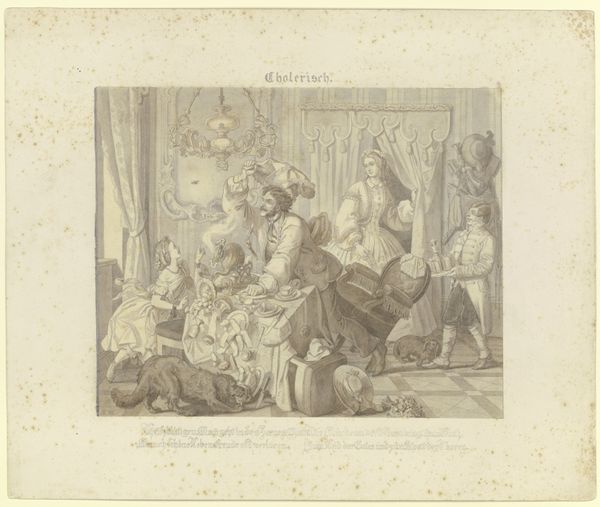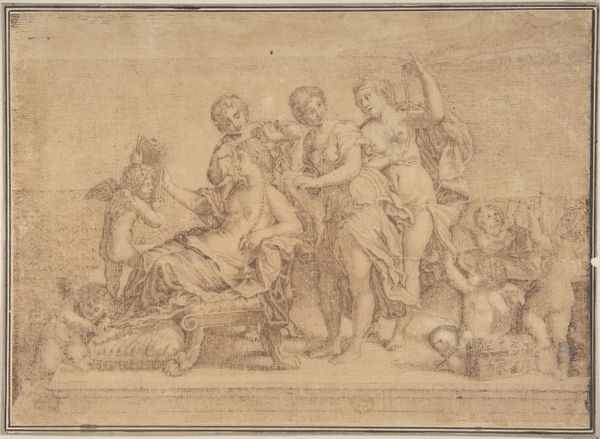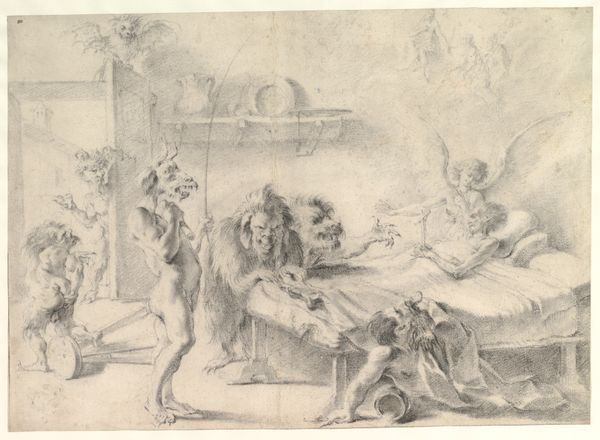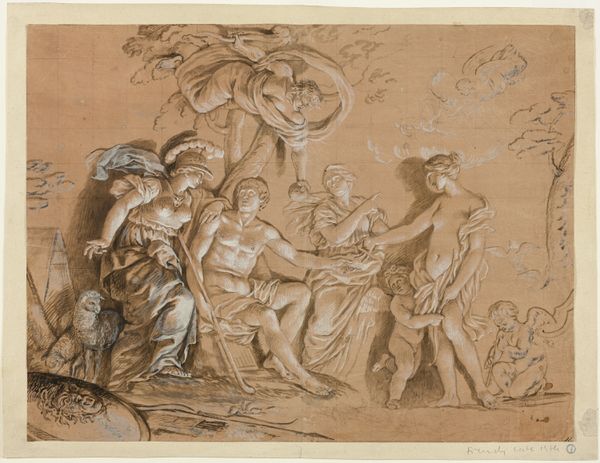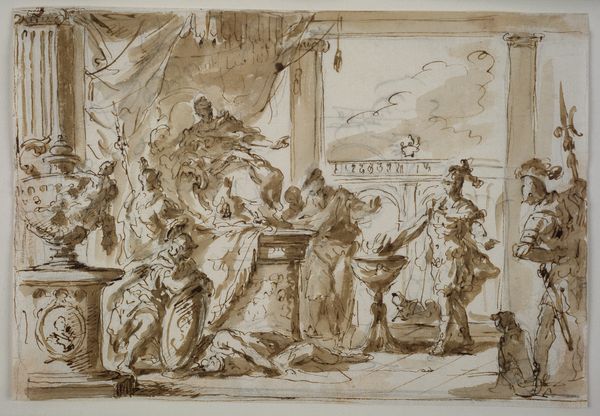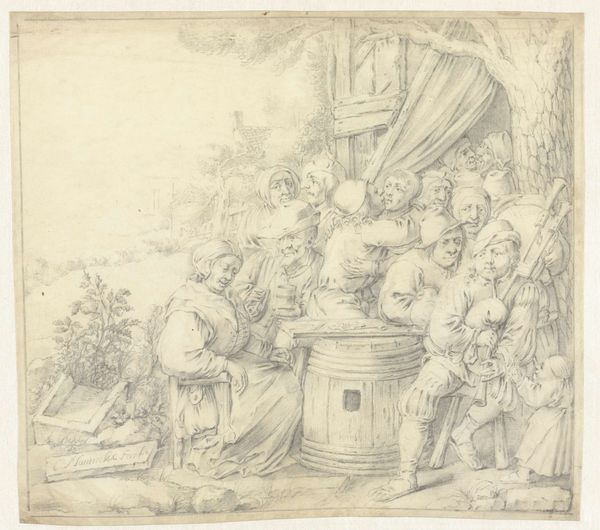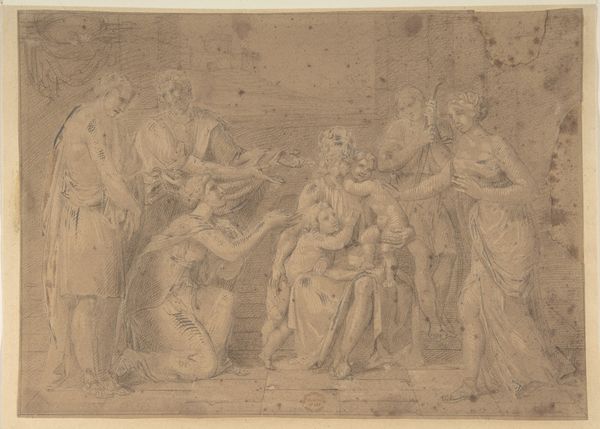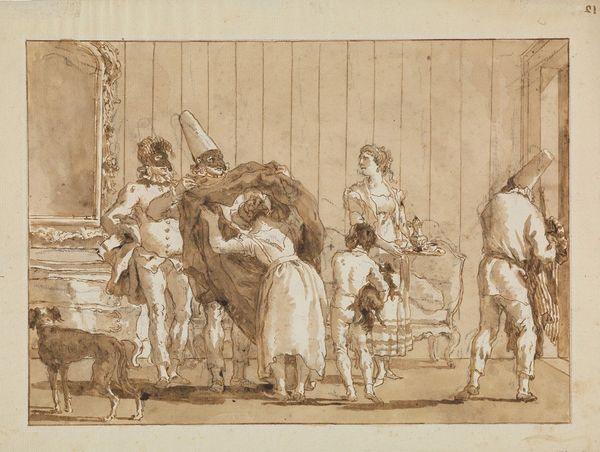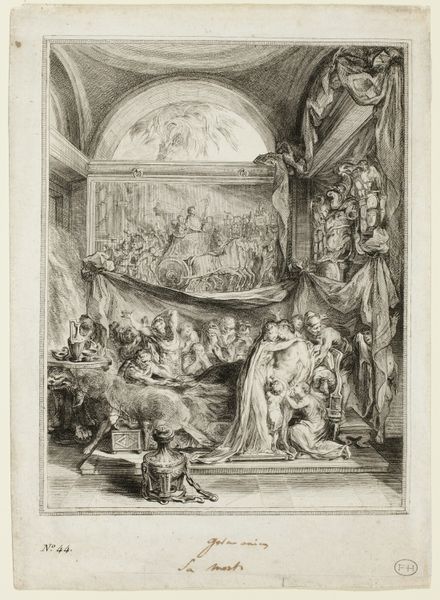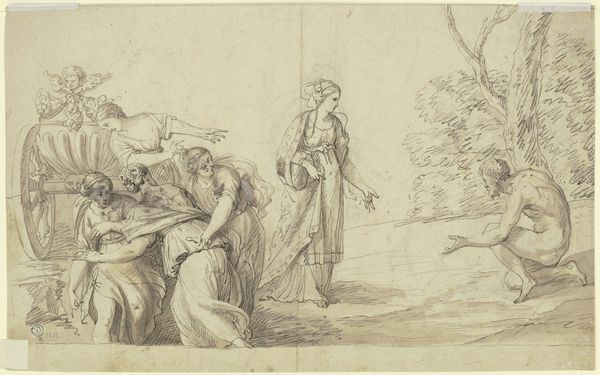
Copyright: Public Domain
Editor: Here we have Georg Melchior Kraus’ "Singing Farm Family at a Table," a chalk and pencil drawing from around 1765 to 1769. The soft lines and the close gathering around the table gives it such an intimate feel, almost like we're intruding on a private moment. How do you interpret this work? Curator: Intrusion is a great entry point. It speaks to the dynamics of power and representation within genre scenes. These idyllic images of rural life often masked the harsh realities faced by peasant communities. The singing, the gathering, could be read as acts of resistance, reclaiming agency through communal expression. Editor: Resistance? That’s not something I immediately saw. Curator: Think about the period. The late 18th century was rife with social and political upheaval. Kraus, positioning the “Singing Farm Family” within Romanticism, presents a carefully constructed vision, but what is he implicitly reacting against? The aristocracy's decadence? The rigid social hierarchy? Is this image purely sentimental, or does it carry a subversive undertone, idealizing the "common folk" as morally superior? What might it mean to portray working-class people making their own music and family harmony? Editor: So you're saying Kraus may be using this idyllic scene to make a statement about social justice or class equality? Curator: Precisely. And we need to unpack our own assumptions when viewing it. Does this image perpetuate stereotypes, or does it humanize a marginalized group? It's a critical lens that helps us see beyond the surface beauty. Editor: That gives me a lot to think about, particularly how even seemingly simple images can have multiple layers of meaning and even be acts of social commentary. Curator: Exactly, by interrogating art with such considerations we can reveal unspoken and often contested narratives about the distribution of power across history.
Comments
No comments
Be the first to comment and join the conversation on the ultimate creative platform.
